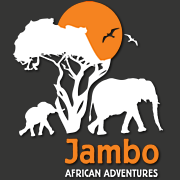Waterberg Plateau Park Overview
Waterberg Plateau Park covering 156 square miles, is home to several scarce and endangered species, including black rhino, white rhino, roan antelope and sable antelope. Other animals seen in this area include eland, tsessebe, brown hyena, oryx, kudu, klipspringer, and occasionally, leopard.
Visitors to the Waterberg Plateau Park will also come across unique flora along with rock paintings and engravings. Three trails lead up to the top of the plateau, which rises over 820 feet above the surrounding plains.
Climate
The elevated Waterberg Plateau divides its time between a cool, practically rain-free winter (May to October) and a slightly damper and stormy summer (November to April). The former can get very cold in the early morning (5°C/41°F), so take care to rug up if you’re visiting anytime from June to August.
NAMIBIA TOP DESTINATIONS
› Damaraland› Etosha National Park
› Namib Naukluft National Park
› Skeleton Coast
› Sossusvlei
› Waterberg Plateau Park
Waterberg Plateau Park
Waterberg Plateau National Park is located 300km/ 187mi northeast of Windhoek. The park can be visited on an organized tour or independently on a self-drive safari, but self-drive within the park itself is not allowed. Drives and guided walks can be booked in advance through the Namibia Wildlife Resorts office. The road to the park is accessible for normal 2WD cars, but can be in poor condition in some sections. Fly-in trips involving charter flights between different locations can be booked, but many visitors start their self-drive or organized safaris by way of 4x4 vehicles in the capital city of Windhoek. Hosea Kutako International Airport (WDH) is located 40km/25mi east of Windhoek, and is the primary entry point into Namibia.
There is great wildlife viewing to be had on the Waterberg Plateau. Most big safari animals are present, including both white and black rhino. Several rare antelope species can be encountered such as sable and roan; and eland, greater kudu and tsessebe are also present. Brown hyena and leopard are the main predators. There are no lions or elephants.
The Waterberg plateau is an excellent birding destination. The park has more than 250 species recorded over a relatively small area. This is due to its location at the meeting point of different vegetation types. Broad-leafed woodland on top of the plateau can be found mixing with thornbush savanna below the plateau. The cliffs provide a third habitat. The walking safaris are very productive for bird watching. The park is home to Namibia’s only breeding colony of Cape vultures. Migratory birds are present from November to April.
Best Time to Visit
For wildlife viewing, the Dry season (in particular July to September) is the ideal time to visit Waterberg Plateau. Animals seek out water during this time and tend to hang around those sources when found. Foliage also routinely shrinks back in the hotter months making wildlife watching easier.








